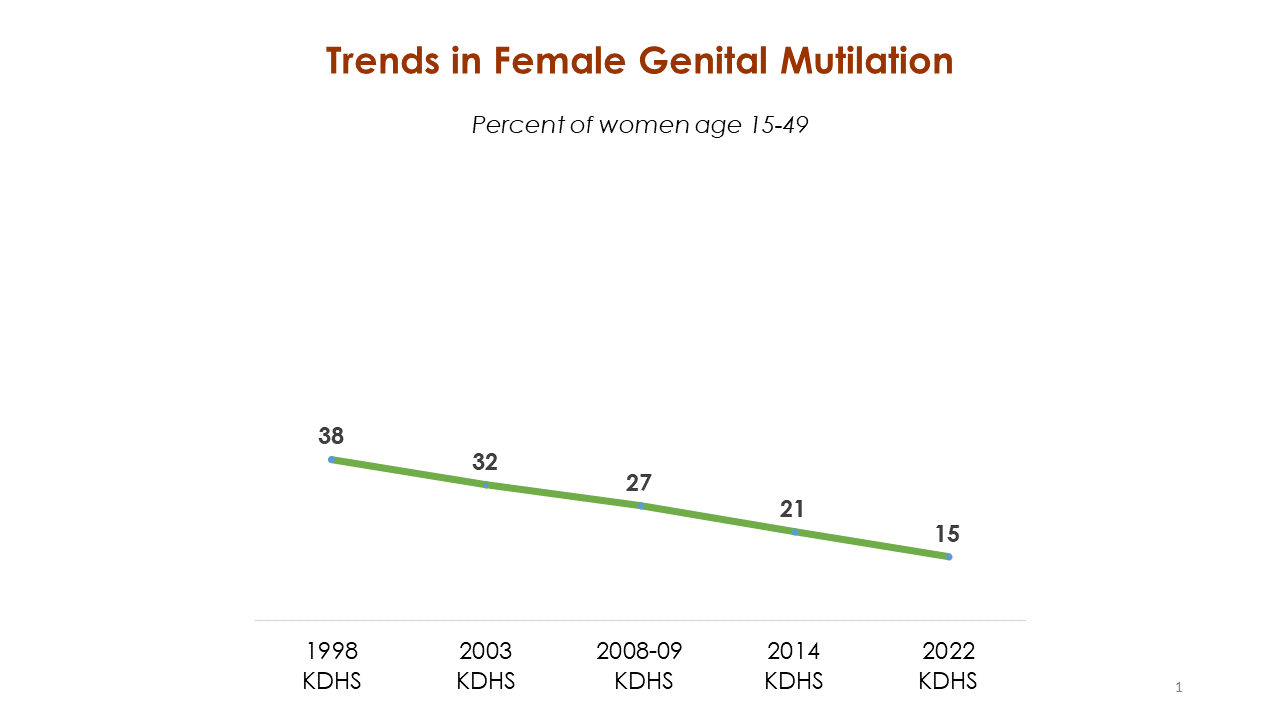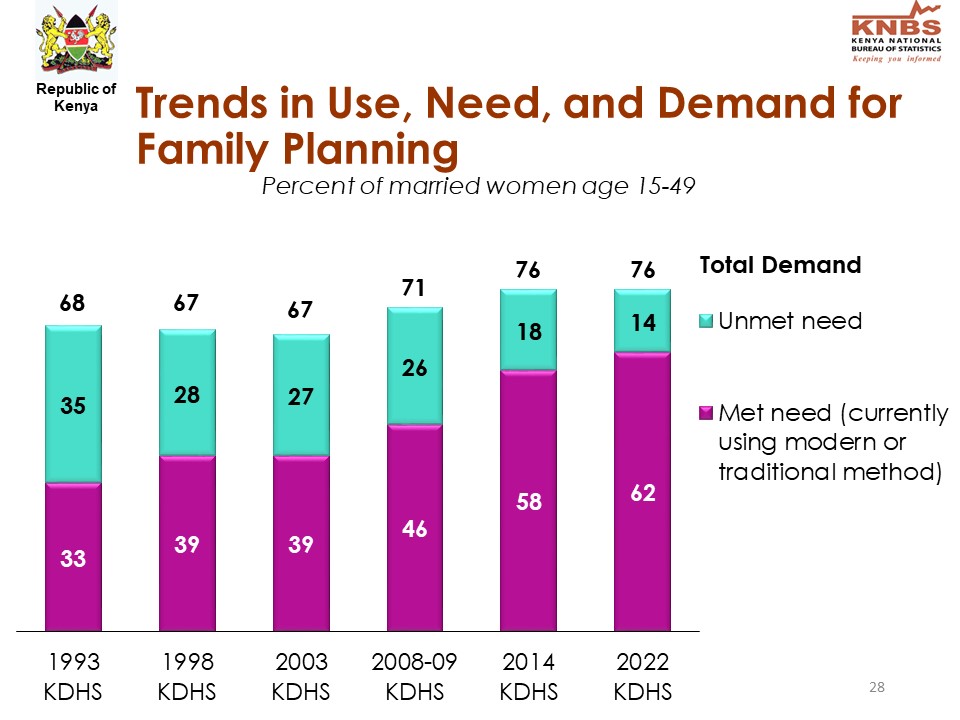The Kenya Demographic and Health Survey (KDHS) 2022 key indicators report released by the Kenya National Bureau of Statistics reveals that Kenya is making progress in reducing the national prevalence of FGM, teenage pregnancy, and gender-based violence. Wide variations however still exist according to wealth, geographic location and education.
The household-based survey shows that teenage pregnancy rates declined to 15% in 2022, from 18% in 2014. Poverty and a lack of education were associated with higher rates of adolescent pregnancy as about 4 in 10 women age 15-19 years who have no education have ever been pregnant, compared to only 5% of women who have more than secondary education. Adolescent pregnancies are also more likely to occur among poor communities, as 21% of women aged 15-19 in the lowest wealth quantile reported to have been pregnant, as compared to 8% in the highest wealth quantile. The highest rates of teen pregnancy were recorded in the counties of Samburu at 50%, West Pokot at 36%, Marsabit at 29%, and Narok at 28%. Nyeri and Nyandarua counties reported the lowest rates at 5% each.
On Female Genital Mutilation, the survey report shows that the prevalence of FGM has been on a steady decline in the country. The national prevalence rate was at 15% in 2022, a continued downward trend from a high of 32% record in 2003. FGM occurence was highest among women with no education, at 56.3% as compared to 5.9% among women with more than secondary education.

Protective effect of education
Progress was also reflected in the decline in the percentage of women who reported to have experienced physical violence in the last 12 months. This was recorded at 16% in 2022, down from 20% in 2014. 34% of women in Kenya however reported to have experienced physical violence since the age of 15.
Similar to trends in teenage pregnancy and FGM, the protective effect of educating women and girls was evident in trends in gender-based violence, as women with more than secondary education experienced less violence at 23%, as compared to 47% among those with primary education.
Substantial progress was also reported in access to maternal care, as nearly all women (98%), reported receiving antenatal care from a skilled provider for their most recent birth in the 2 year period before the survey. Pregnancy care received from skilled health workers including doctors, nurses and midwives is critical to the reduction of maternal deaths and related injuries during pregnancy, delivery, and the postnatal period. Overall, 66% of women had the recommended four or more antenatal care visits, with access being higher in urban areas at 74% as compared to 62% in rural areas.
Meeting the unmet need for Family Planning
The percentage of married women using modern contraceptive has steadily increased over time, from 32% in 2003 to 57% in 2022. Over the same period, the unmet need for family planning declined from 27% to 14%. UNFPA has been working to improve access to family planning through support support to the Ministry of Health and the Kenya Medical Supplies Authority (KEMSA) in rolling out of an integrated Family Planning Logistics Management Information System (LMIS) thatl enables greater visibility of commodities stocks to ensure access to family planning up to the last mile.

The 2022 KDHS is the 7th demographic and health survey conducted in Kenya, to provide timely demographic and health data that supports the formulation of the country’s development programmes. Data was collected from 42,300 households spread across 1,692 clusters throughout the country in the period between February to July 2022. All women aged 15-49 and men aged 15-54 in the selected households were interviewed.
UNFPA is among partners that have provided technical and financial support to the Government of Kenya in carrying out the KDHS 2022, whose full report will be available in the next three months. Other partners include the World Bank, UNICEF, UNFPA, the World Food Programme, UN Women, the World Health Organization, the Joint United Nations Program on HIV/AIDS, the Clinton Health Access Initiative, Nutrition International, and the Bill & Melinda Gates Foundation.


